OUR WORK
Australia is a world leader in species extinction and declines, largely due to invasive species.
Our Work | Ending extinction | Photo by Martin Cohen
Likely extinct: Mountain mist frog
- Common name: Mountain mist frog
- Scientific name: Litoria Nyakalensis
- Formal national status: Critically endangered
- Expert assessment of extinction likelihood: 93% (Geyle et al. 2021), 85% (Garnett et al. 2022)
- Decade of extinction: 1990s
- Expert assessment of extinction causes: Invasive species (chytrid fungus)
This frog of north Queensland’s wet forests was declared extinct by the IUCN in 2022, following many searches since 1990 that failed to produce a single sighting. The Queensland and Australian governments call it ‘critically endangered’ in the hope survivors will yet be found. In 2020 a group of experts conceded it was highly likely to be extinct. Its disappearance is blamed on chytrid fungus, an Asian pathogen that swept north through Queensland in the 1980s from an apparent arrival point in Brisbane.
Mountain mist frogs had perched on vegetation and rocks along fast-flowing streams in upland rainforest. Their tadpoles were adapted for rapids and runs, adhering to rocks by their mouths, which had 5 rows of gripping teeth. They fed by rasping algae from rocks and had very muscular tails for swimming upstream.
The mountain mist frog has a very close relative, the common mist frog, that was lucky to escape the same fate. In 2000 it was listed as endangered after populations living above 400 metres altitude succumbed to chytrid fungus. But this frog has lowland populations that survived because chytrid fungus cannot tolerate temperatures above 28°C. Common mist frogs have recolonised some upland sites, probably by adapting to survive the fungus. The species was delisted in 2020.
The mountain mist frog looks so alert and healthy in this vivid photo it’s hard to accept this species is extinct. It lived in rainforest above 400 metres from the southern Atherton Tableland to the Mt Carbine Tableland near Mossman but has not been seen since 1990.
Photo: Martin Cohen
Extinct
Australia has lost about 100 native plants and animals to extinction since colonisation, most of which were mainly due to invasive species. An estimated 27 of those extinctions occurred since the 1960s.
Learn more about some of Australia’s lost animals:






